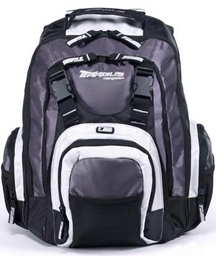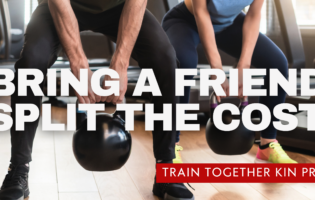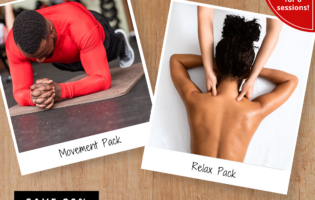Total Therapy Blog
Pack it Right – Back Health for Students

Through elementary school to university, the backpack is a student staple, and there’s a lot that goes into them. Textbooks, lunch boxes, binders, pencil cases – it’s easy to see how backpacks can get…well…packed. A recent survey of New York schools found that on average, sixth graders were lugging 18.4 lbs of supplies in their backpacks, with the heaviest pack weighing in at 30 lbs.
Backpacks that are too heavy, the wrong fit, or worn improperly are major contributors to back and shoulder pain. Here are some great tips about how to pack and wear a backpack to avoid common pitfalls (and future discomfort), courtesy of the Canadian Chiropractic Association. (http://www.chiropracticcanada.ca)
Choosing a Backpack
 Choose one that fits. The top of the backpack shouldn’t go past your shoulders, and the bottom should sit no lower than the top of your hips.
Choose one that fits. The top of the backpack shouldn’t go past your shoulders, and the bottom should sit no lower than the top of your hips.- Pick a backpack made of lightweight material, so you’re not adding extra weight.
- Ensure the straps are at least 2 inches wide, are padded, and aren’t too snug. This helps to avoid putting pressure on the nerves and muscles of the armpits.
- The backpack should have a padded back for extra protection and comfort.
- Look for a bag that has a waist belt or strap. This helps redistribute up to 50-70% of the weight of the bag to the hips, instead of having it hang off the shoulders and upper back.
- Choose a bag with several smaller compartments to help distribute the weight evenly and keep items from moving around.
- Check out other options like rolling backpacks with a handle.
How to Pack a Backpack
- Backpacks should not exceed 15% of your body weight – for elementary students, the weight of the backpack shouldn’t exceed 10% (e.g. if your child weights 75 lbs, their backpack shouldn’t weigh more than 7.5 lbs). For a quick easy check, try the following: stand on your home scale without the bag. Put your backpack on, and then weigh yourself again. Subtract the two numbers, and you’ll be able to find the weight of the backpack easily and accurately.
- Make sure the weight is evenly distributed.
- Pack the heaviest items closest to the body to reduce the strain on the back.
- Don’t overload it! Pack what you need, and store everything else at home or in your locker/desk.
- Pack pointy or awkward-shaped items away from the back so they won’t dig into the back.
How to Wear a Backpack
- Adjust the straps so the bag fits snugly to your body. You should be able to slide your hand between the bag and your back.
- Wear BOTH straps. Don’t sling your backpack over one shoulder – this places an uneven, excessive load on one side of the body, creating postural imbalances and putting you at risk of future back/shoulder pain.
- Use the waist belt or strap if available to reduce the load on your shoulders and back.
- Make sure your bag isn’t too low – a low-slung backpack will cause you to lean forward and carry the full weight on your upper back.
Conclusion
By following these simple guidelines, you can save yourself future problems. Remember: back and shoulder pain does not have to be a normal part of life. If you find yourself struggling with daily discomfort, take action! Seek help from a medical professional like your family doctor or chiropractor. Your back will thank you.









Follow Us!
& Stay Up To Date
BLOG